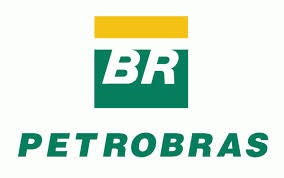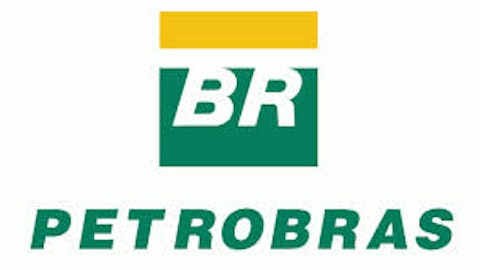Petroleo Brasileiro Petrobras SA (ADR) (NYSE:PBR) has fallen hard. In 2008, the company was the global stock market’s emerging market poster child, a successful private-public venture sitting on the largest oil reserves discovered in the Americas in recent decades.
Over the last two years, the company’s share price has done a slow motion tumble from $50, hitting a new low of $14.60 this week. Investors have dumped the stock as the government maintains low domestic fuel prices and Petrobras’ costs rise across the board. Forbes writer Kenneth Rapoza has staked out the bear stance on Petrobras, questioning CEO Maria Graça Foster’s statements in addition to outlining Petrobras’s recent and future concerns. I take a bull position: Petrobras’s share price collapse makes it one of the most attractively priced oil stocks in the market.
Petroleo Brasileiro Petrobras SA (ADR) (NYSE:PBR) is Brazil’s state oil company. With international partners, it develops Brazil’s growing oil reserves, while refining and selling oil and gas throughout the country. The company went public in 2003, but the Brazilian government retains a majority stake. Shares hit $70 right before the financial crisis in 2008, took a fall, and then appeared to recover in 2009, reaching $50 as investors poured money into Brazil’s quick recovery and fast GDP growth.
Petroleo Brasileiro Petrobras SA (ADR) (NYSE:PBR) sunk with hopes of sustained 7% GDP growth and a series of problems continue to push the share price down. First, Petrobras refines and sells for the domestic market, but the government sets fuel prices, often below market price. Capped fuel prices are great for consumers, but limit profits and – coupled with rising production costs – can cause losses. Second, Petrobras faces rising costs on all fronts: labor costs are rising in Brazil, industrial and fuel exports are on the rise as the Brazilian real loses ground to the dollar, and estimates for Petrobras’ capital expansion projects keep going up. In early February, Petrobras cut its dividend to keep its capital expansion plans on track.
High uncertainty, high rewards
A tumbling share price means that Petrobras is much cheaper than its peers, with a lot of potential upside and little downside left. Petrobras trades at .58 price-to-book. In other words, it trades for almost 50% less than its existing assets are worth – and the company is sitting on some of the largest oil reserves in the Americas.
Petrobras’ P/E comes in at 9, only slightly under the industry average of 11, but keep in mind that the company’s P/E has suffered from lackluster earnings due to rising costs; if costs decrease or revenues increase, the P/E will shrink. Additionally, despite big investments, Petrobras is not overburdened with debt, its debt-to-equity comes in at .54. Finally, even after February’s dividend cut, Petrobras still has a dividend, yielding about 1% at today’s Brazilian real-dollar exchange rate and price.
The market is shunning Petrobras. The company faces further uncertainty on costs, reserve development, investments, and domestic fuel prices, all of which scare investors away and auger share price volatility. Furthermore, even the CEO has declared that 2013 will be rocky. But trading at .5 book value, Petrobras does not have much further to fall.
The potential upside remains huge: Petroleo Brasileiro Petrobras SA (ADR) (NYSE:PBR) is likely to increase its dividend after its capital expansion projects end, and any upward revision of domestic fuel prices will boost shares. The current administration has repeatedly stated that it will raise fuel prices and, according to the Heritage Foundation, Brazil is converging on global regulation averages. Both are good signs for increased and eventually floating fuel prices. Furthermore, Petrobras’s investments are already paying off: on Thursday, the company announced that its presalt fields reached 300,000 barrels a day after only seven years of development. For comparison, presalt fields in the Gulf of Mexico reached 300,000 barrels a day after 17 years.
Buying Petrobras at its new low is a risky emerging market play. But at .5 book value, the stock is extremely cheap and the company packs plenty of potential growth in with massive oil reserves and a captive, if currently subsidized, domestic market. To emphasize my bullish position on Petrobras, I’ve rated the company as a long-term buy on my CAPS page.
The article Buy into Petrobras’ Collapse originally appeared on Fool.com.
Copyright © 1995 – 2013 The Motley Fool, LLC. All rights reserved. The Motley Fool has a disclosure policy.




